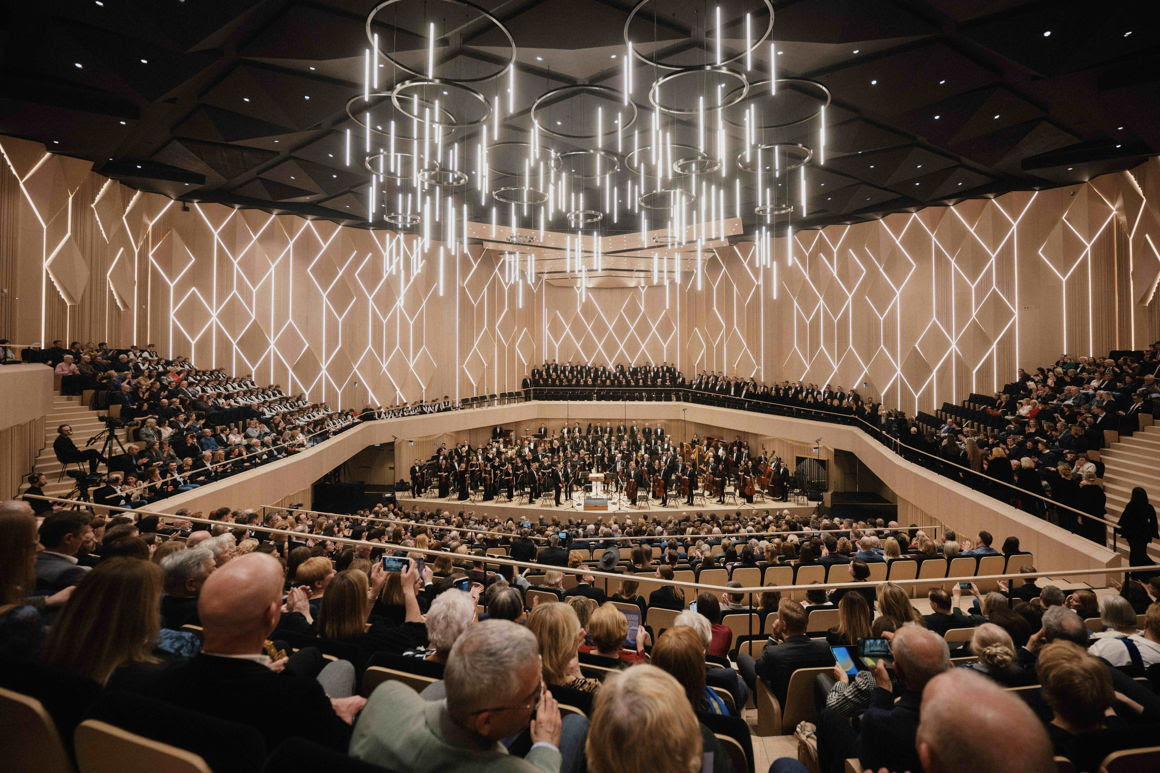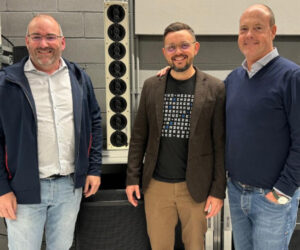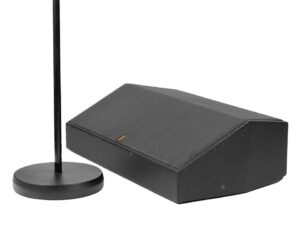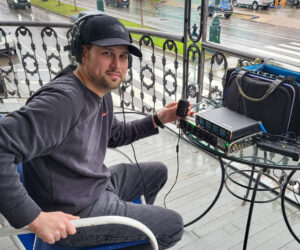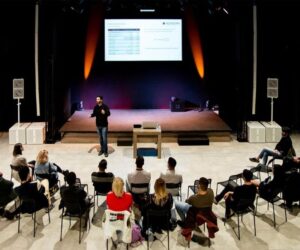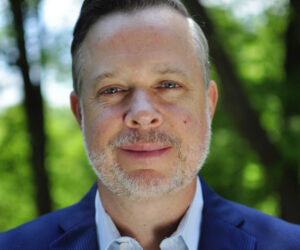Situated in the heart of Vilnius, the capital city of Lithuania, the newly reconstructed concert hall of the Lithuanian State Symphony Orchestra (LVSO) is equipped with acoustics especially adapted to symphonic music in a project by designer Marius Mateika and the services of Lithuanian architectural and building acoustic company Akustika Plius collaborating with ADA Acoustics & Media Consultants GmbH (a WSDG Company).
In 2018, Prof. Dr. Wolfgang Ahnert, founding director of ADA Acoustics & Media Consultants GmbH, had the opportunity to visit the old hall and meet with long-standing conductor of the LVSO, Gintaras Rinkevičius. “It was evident to both of us that the hall required fundamental reconstruction to significantly improve its acoustics,” says Ahnert. “Although the space was used for both speech and symphonic performances, it was definitely more adapted to speech purposes, with a very short reverberation time.”
Subsequently, Viktoras Mekas from Akustika Plius invited Ahnert to formally participate in the project, benefitting from Ahnert’s knowledge in the field of room- and electro-acoustic designs as well as noise control. “Although the term ‘good acoustics’ sounds quite simple, during the project we had to consider a lot of different acoustic indicators and criteria. These included reverberation time, music and speech clarity, warmth of sound, as well as the mutual hearing of musicians and density of lateral reflections. Meeting all these parameters required the implementation of various measures,” Ahnert explains.
“In close cooperation with interior designer Marius Mateika, we worked together with Viktoras and the construction company to determine the primary and secondary requirements necessary to enhance the acoustics of the hall,” Ahnert continues, noting that the primary structure refers to the correlation between volume, space, and dimension. “The key takeaway from our visits was that the height of the ceiling of the hall didn’t offer enough volume to create optimum acoustics for every visitor, which included a two-second reverberation time needed for a perfect symphonic listening experience.”
After a hiatus caused by the lockdown, the project resumed in 2022. Ahnert worked with colleague Tobias Behrens to create simulations using software program EASE at their office in Berlin. These were then passed to Mekas and fellow acoustics consultant and architect at Akustika Plius, Gintare Privediene, who collaborated with Mateika and the construction company on what was necessary from an architectural viewpoint.
The first stage of the project involved fundamentally changing the design of the hall, raising the roof after convincing the client to add extra volume to the 984-seat concert hall. In line with amphitheater principles, a stage with two movable raisers was installed, along with new lighting and ventilation systems.
The next stage was focused on the so-called secondary structure of the hall, involving the integration of three-dimensional acoustic patterns on the ceiling and walls combining rhombuses, triangles, rib panels, and smooth acoustic panels to create an optimum listening environment and aesthetically balanced concert hall. “By integrating these panels, it was possible to diffuse sound reflections and ensure even distribution across the entire hall,” says Behrens.
Behrens further notes that ADA’s experience comes from its work on similar projects, including the Elbphilharmonie and Kulturpalast Dresden in Germany, National Opera in Romania, Music Theater Linz in Austria, and many other venues.
Following extensive work carried out by all the team members involved in the project, the concert hall opened its doors in mid March, with an evening of performances by the Lithuanian State Symphony Orchestra, the Kaunas State Choir, the Lithuanian National Opera Theater Choir, the Boys and Youth Choir “Ažuoliukas” as well as several other Lithuanian soloists. Describing this Mahler concert during the opening as “historic,” Rinkevičius notes that it was a “very important event for Lithuanian musical culture as well as Lithuanian culture in general.”
“I remember my first conversation with Gintaras; he was doubtful it was possible to create outstanding acoustics in the hall,” concludes Ahnert. “Those doubts were dispelled during the first rehearsals in autumn 2023 when Gintaras was amazed how good the acoustics were. Following the official opening concert in March, which saw the venue filled beyond capacity, yet still maintaining its exceptional sound quality, Gintaras was thrilled, and so was everyone else!”


